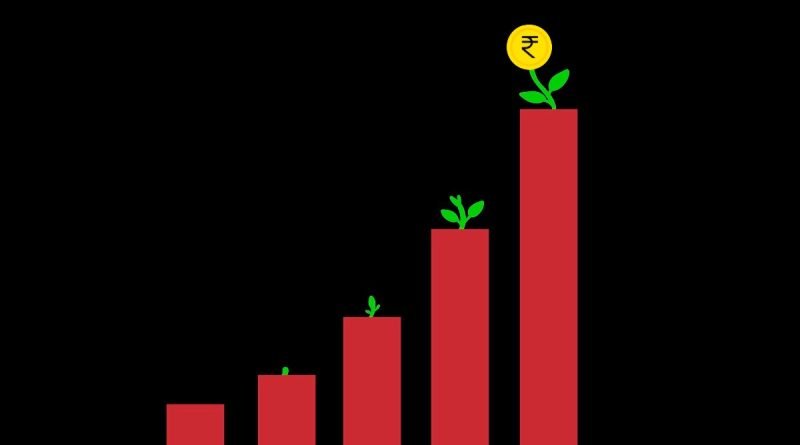Why consumption and investment need to rev up for higher growth

The first advance estimates of the country’s Gross Domestic Product (GDP), announced by the National Statistics Office recently, shows that the Indian economy is projected to rebound from a contraction of 7.3 per cent in 2020-21 to post a growth of 9.2 per cent in 2021-22.
The actual GDP numbers may differ from what has been projected currently, given the third wave of the pandemic, but the numbers point towards the direction the economy is heading.
There is no doubt of recovery in this financial year compared to the previous financial year totally marred by Covid-19, but there are certain areas that need a further boost through policy measures, as revealed by a close study of the advance estimates.
Overall the GDP for 2021-22 (at 2011-12 prices), also called real GDP as it is adjusted for inflation, stood at Rs 147.53 lakh crore in absolute terms, compared to Rs 145.69 lakh crore in 2019-20, which means the economy has grown just 1.3 per cent from the pre-pandemic year.
Private final consumption expenditure, the largest demand side driver, continues to lag at Rs 80.8 lakh crore in fiscal 2021-22, which was 2.9 per cent below Rs 83.2 lakh crore in fiscal 2020.
Investments, such as gross fixed capital formation, are back in green, but they are only 2.6 per cent above the fiscal 2020 levels. According to a CRISIL research note, investments are largely driven only by government-led infrastructure creation programmes. A wider investment cycle recovery, with private and household sector participation, still remains weak.
Private sector capital expenditure has been lacklustre for a while now. Even in the pre-pandemic days, large-scale investments by corporates had been drying up. According to a study by the Centre for Monitoring Indian Economy (CMIE) in October, new investment proposals have been falling relentlessly since 2015. New investment proposals per quarter averaged at Rs 6 lakh crore in 2014-15 and 2015-16. This fell to Rs 4.8 lakh crore in 2016-17 and then to Rs 4 lakh crore in 2017-18. In 2018-19 and 2019-20, it was Rs.4.2 lakh crore per quarter. “New investment proposals per quarter, therefore, had fallen by 30 per cent in six years till before the Covid-19 pandemic,” CMIE said.
The fall in the year of the pandemic was a dramatic 55 per cent, when new investment proposals per quarter fell to Rs 1.9 lakh crore. The situation in the first two quarters of 2021-22 was not much better, at Rs.1.8 lakh crore per quarter.
Reasons for the low private investments are not too hard to find. Corporates, except for a few large ones, have been on a wait-and-watch mode as the economy slowed, going into a phase of conserving cash and pruning operational costs to tide through the uncertain times. The pandemic has only made matters worse.
According to Madan Sabnavis, chief economist of Bank of Baroda, the increase in gross fixed capital formation would be challenging to achieve. This is because private investment is down and states have been cautious to spend in view of the uncertainty on their fiscal balances, he wrote in an article in the Business Standard recently.
The Centre, which is the only entity spending as per the Budget, can only complement the private sector, but can’t lead the investment cycle. The same holds true for consumption growth, which is also likely to be revised downwards due to the impact of the Omicron variant.
In December, consumer sentiments declined after increasing for five consecutive months, says Mahesh Vyas of CMIE. CRISIL, on the other hand, says that construction sector growth is still muted at 1.2 per cent (Rs. 10.5 lakh crore in 2021-22 over Rs 10.4 lakh crore in fiscal 2019-20) and remains a concern, given the sector’s labour-intensive nature and employment potential. “Some contact-intensive services are still estimated to trail pre-pandemic levels as reflected in ‘trade, hotels, transport, communication and services related to broadcasting’ segments, which still remain a huge 8.5 per cent below fiscal 2020 levels,” it says.
With the rise in Omicron cases and a looming third wave, contact-intensive services could be vulnerable to prolonged pain, it adds. The agriculture sector, meanwhile, has been consistently growing. Agri Gross Value Add (GVA, which measures the output before taxes) in fiscal 2022 is estimated to be 3.9 per cent above the fiscal 2021 level and 7.7 per cent above the fiscal 2020 level. Also recovering are government services and manufacturing, growing 5.6 per cent and 4.4 per cent, respectively, above the fiscal 2020 level.
[“source=indiatoday”]

